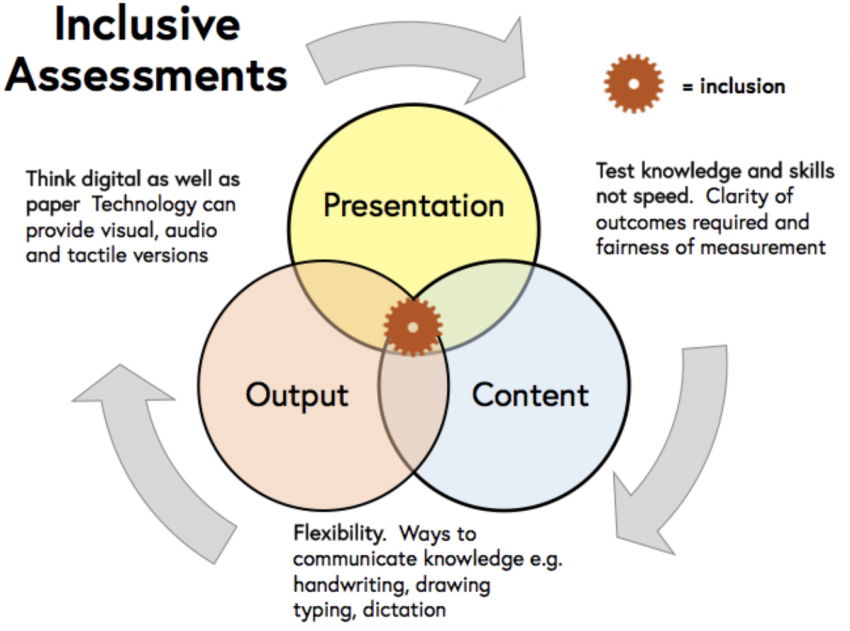Measurable Learning Objectives
How can you articulate effective learning outcomes and objectives for your students?
Course-level learning objectives (or outcomes) shape the module-level learning objectives that inspire you to create learning materials, activities, and assessments designed to demonstrate the students’ grasp of course content.
Once you have structured your learning objectives and delivered the course module, remember to ask your students for input. How did they feel about the assignments and did performing them have any impact on the student? IE Will they take portions of this assignment into their life or professional career?
Overview
As you determine your lesson objectives, remember they will be used to directly inform learning activities and assessments. The objectives must be stated in a clearly measurable way so they may be assessed. The objectives must provide the instructor a way to observe and determine if the student fulfills the objective.
Writing lesson objectives requires thought and consideration. Once the desired outcomes are known, the objectives can be written by considering the following concerns and answering key questions:
- Performance – Answer: What do I want students to be able to do? (must be measurable, use action verbs)
- Condition – Answer: What are the important conditions or constraints under which I want them to perform? (can include tools)
- Criteria – Answer: How well must students perform for me to be satisfied?
- Learner – Answer: Who will be performing? (often left implied as ‘the student’)
- Reflection – How might you update or alter this activity based upon student input? Reflection & Closing the Loop [1]
How do we measure?
Make objectives clear. Your department may provide course objectives. When you put them in your course, break them up into manageable module or lesson objectives.
Avoid language like, “the student will understand…” Measuring understanding is difficult. Look to specific language as outlined by one or more taxonomies:
Good Learning Objectives
Effective learning objectives should:
- be student-centered.
- use active wording.
- be measurable.
- specifically relate to learning and overall goals of the course.
- suit the level of the course based on learning taxonomy paradigm.
Examples
By the end of this course students will be able to:
Good • Apply the pythagorean theorem to compute the hypotenuse from the length of the triangle’s legs.
SLOA is measurable, specific, and has a condition.
Bad • Understand how to use the pythagorean theorem.
How do you measure “understanding”? What are the criteria for demonstration of understanding?
Bad • Become familiar with the use of the pythagorean theorem and its applications.
How do you measure “become familiar with”? What are the conditions for performance?
Are we measuring correctly?
Break the concept down to the core of what is required and truly consider whether an element of time is needed. Is it critical that this be performed quickly? If so that needs to be part of the criteria.
Make sure your students will be able to participate in the actions needed to meet the objective. When you expect a student to perform make sure you are allowing for varied types of presentation.
- Is the student population able to present in the manner you request?
- Are the costs prohibitive?
- Do you require them to speak? Is language a barrier?
Take a step back and simplify the outcome as best you may to that all of your students are able to participate.
Equity in Assessment
Work toward making your assessment inclusive of your student base.
“Being attentive to how students may understand questions, tasks, and assignments differently, as well as feedback regarding their learning, is not only beneficial to students but to internal improvement efforts as well. Intentionally choosing appropriate assessment tools or approaches that offer the greatest chance for various types of students to demonstrate their learning so that assessment results may benefit students from all backgrounds advances our collective interest in student success.”
Montenegro & Jankowski p.5

Research Foundations
Burrows, T. Student Learning Outcomes in an Inclusive Environment. University of North Dakota
Kennedy, D. (2009). Writing and Using Learning Outcomes: A Practical Guide. Cork, Ireland: Quality Promotion Unit.
Montenegro, E., Jankowski, N. (2017, January) Equity and Assessment: Moving Toward Culturally Responsive Assessment. National Institute for Learning Outcomes Assessment. (NILOA)
National Institute for Learning Outcomes and Assessment. (2021, January 22). Student Learning Outcomes Statements component of the Transparency Framework. NILOA.
Starr, C. W., Manaris, B., & Stalvey, R. H. (2008). Bloom’s taxonomy revisited: specifying assessable learning objectives in computer science. ACM SIGCSE Bulletin, 40(1), 261-265.
